ISO 22000 Certification in Nairobi
Get Free Consultation
PopularCert offers expert ISO 22000 certification services in Nairobi, helping food-related businesses establish effective Food Safety Management Systems that align with international best practices. ISO 22000 certification in Nairobi benefits organizations in areas such as Westlands, Eastleigh, and Industrial Area by ensuring safe food handling, hazard control, and regulatory compliance. Our services are based on the ISO 22000 standard and can be integrated with other frameworks like HACCP, ISO 9001 (Quality Management), and ISO 14001 (Environmental Management), supporting a comprehensive and trusted food safety system for both local and global markets.
What Is ISO 22000 Certification?
ISO 22000 Certification is a global standard for food safety management systems. It helps food-related businesses identify, manage, and reduce food safety hazards throughout the supply chain. This certification ensures safe practices from farm to fork, boosting consumer trust and regulatory compliance while enhancing food safety culture across production, processing, storage, and distribution stages.
Why Is ISO 22000 Certification Important In Niarobi?
- In Nairobi’s fast-growing food sector, ISO 22000 certification is becoming essential for businesses that want to be seen as safe and trustworthy. From food processors to restaurants, having this certification shows that your company follows internationally accepted food safety practices, which reassures customers and regulators.
- It’s not just about ticking a box, it’s about building a culture of care in every step of food handling. ISO 22000 helps reduce risks, prevent contamination, and improve communication across the supply chain. For businesses in Nairobi aiming to meet export standards or serve health-conscious local markets, ISO 22000 offers a clear path to gaining confidence, staying compliant, and setting your brand apart in a highly competitive food industry.
How to Get ISO 22000 Certification in Nairobi?
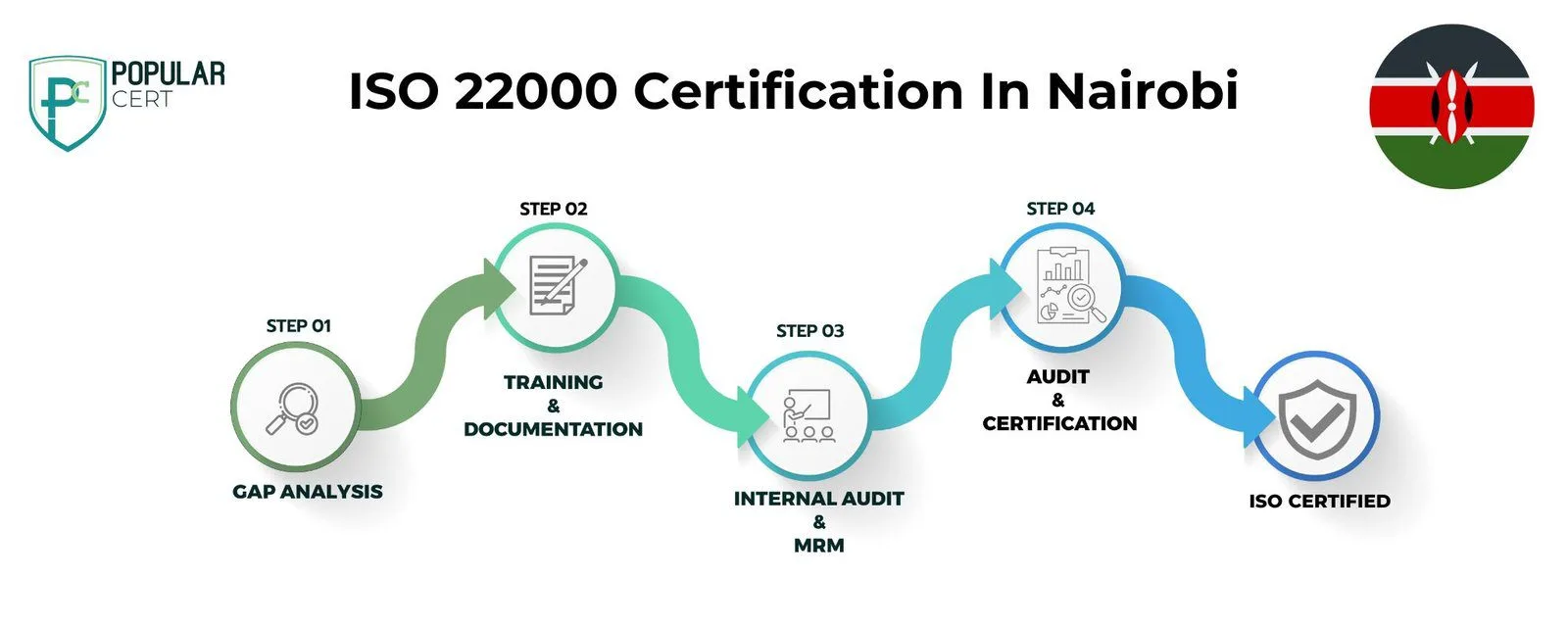
Process to Get ISO 22000 Certification in Nairobi
Consultation and Gap Analysis
At PopularCert, our experts evaluate your organization’s current systems and specific needs. We conduct a comprehensive gap analysis to identify areas requiring improvement to comply with ISO 22000 standards.
Planning, Documentation, and Policy Development
Based on the gap analysis, we develop a tailored implementation plan, determine resource requirements, and assist in preparing essential policies and documentation. These elements are seamlessly incorporated into your existing organizational structure.
Training and Awareness
We provide in-depth training to ensure your team understands ISO 22000 requirements and their roles in maintaining an effective Food Safety Management System (FSMS).
Internal Audit and Management Review
Our team conducts internal audits to assess the FSMS’s effectiveness and resolve any identified non-conformities. We also guide you through a management review to align the system with your business goals and ISO 22000 requirements.
External Certification Audit and Certification
After successfully completing the external audit conducted by an accredited certification body, your organization will receive ISO 22000 certification. This certification demonstrates your commitment to food safety and compliance with international standards, enhancing your reputation and customer trust.
Benefits of ISO 22000 Certification in Nairobi
- Global Recognition: Streamlines an internationally accepted Food Safety Management System (FSMS).
- Enhanced Food Safety: Improves safety across all stages of food production and delivery.
- Increased Customer Confidence: Demonstrates commitment to providing safe, high-quality food.
- Regulatory Compliance: Serves as a roadmap for meeting legal requirements and reducing food safety risks.
- Health Protection: Safeguards public health through systematic food safety management.
- Operational Efficiency: Supports best practices, thorough hazard assessments, and continuous improvement.
- Market Access: Facilitates entry into new markets and strengthens reputation in the global food supply chain.
- Structured Approach: Provides a clear framework for managing food safety threats.
Types Of ISO Certification In Nairobi
Get Free Consultation
Our Clients






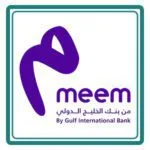
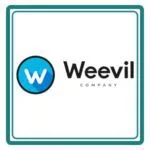



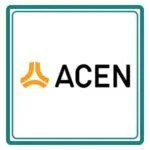
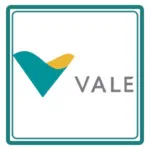



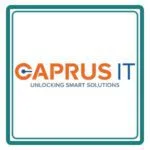

Why is it necessary to implement food safety standard?
- Impact on Health: Unsafe or contaminated food can lead to serious health issues and diseases.
- Preventing Outbreaks: Maintaining high food safety standards helps prevent widespread illness.
- Ethical Responsibility: Ensuring food safety is not just about regulations; it is the right thing to do for public health.
- Well-Being: Safe food is essential for overall well-being and health.
- Trust in Food Supply: High food safety standards build consumer confidence in the food supply.
- Global Standard: ISO 22000 sets international requirements for a Food Safety Management System (FSMS).
- Risk Management: It utilizes HACCP principles to identify and manage food safety risks effectively.
Cost Of ISO 22000 Certification In Niarobi
The cost of ISO 22000 certification in Nairobi depends on the type of food business, the number of employees, and the current food safety management practices. If you’re looking for ISO 22000 consultants in Nairobi or curious about the ISO certification cost in Nairobi, it’s essential to consider key pricing factors for better budgeting.
Cost factors may include:
- Type and size of food processing operations
- Existing food safety controls and gaps
- Documentation and system implementation needs
- Number of locations and processes under scope
- Internal staff training requirements
- Certification body audit and assessment fees
- Post-certification maintenance and audit services
You can begin with a free ISO 22000 consultation in Nairobi to get tailored pricing from one of the best ISO certification companies in Nairobi
Why Choose PopularCert For ISO 22000 Certification In Niarobi?
PopularCert supports businesses in Nairobi to achieve ISO 22000 certification with ease, helping them meet international food safety standards. Our expert team in Nairobi offers tailored solutions that align with your operations, ensuring compliance and confidence in food safety management systems. With in-depth knowledge of local regulations, we make the ISO certification process in Nairobi simple and effective.
Why choose PopularCert in Nairobi:
- Trusted support for ISO 22000 certification Nairobi
- Clear guidance through the ISO certification process Nairobi
- Expert-led solutions for food safety compliance
- Access to ISO certification benefits Nairobi businesses rely on
- Affordable ISO certification Nairobi with dedicated service
Let PopularCert help your food business in Nairobi thrive with internationally recognized standards.
GET A FREE CONSULTATION NOW
FAQ
What is ISO 22000 certification in Nairobi and why is it important for food businesses?
ISO 22000 certification in Nairobi helps food businesses ensure safety across the entire supply chain—from farm to fork. It’s important for companies that want to reduce food risks, meet legal requirements, and gain customer trust in Kenya’s growing food sector.
Which companies in Nairobi should get ISO 22000 certified?
Restaurants, food processors, packaging companies, and catering services in Nairobi benefit from ISO 22000 certification. If your business handles food at any stage, certification helps prove your commitment to hygiene and safety.
How much does ISO 22000 certification cost in Nairobi?
The cost of ISO 22000 certification in Nairobi depends on your company’s size and food handling complexity. At PopularCert, we offer affordable and tailored ISO 22000 services to help Nairobi-based food businesses get certified smoothly.
Can small businesses apply for ISO 22000 certification?
Yes, ISO 22000 is suitable for businesses of all sizes in the food industry, from small vendors to large corporations.
